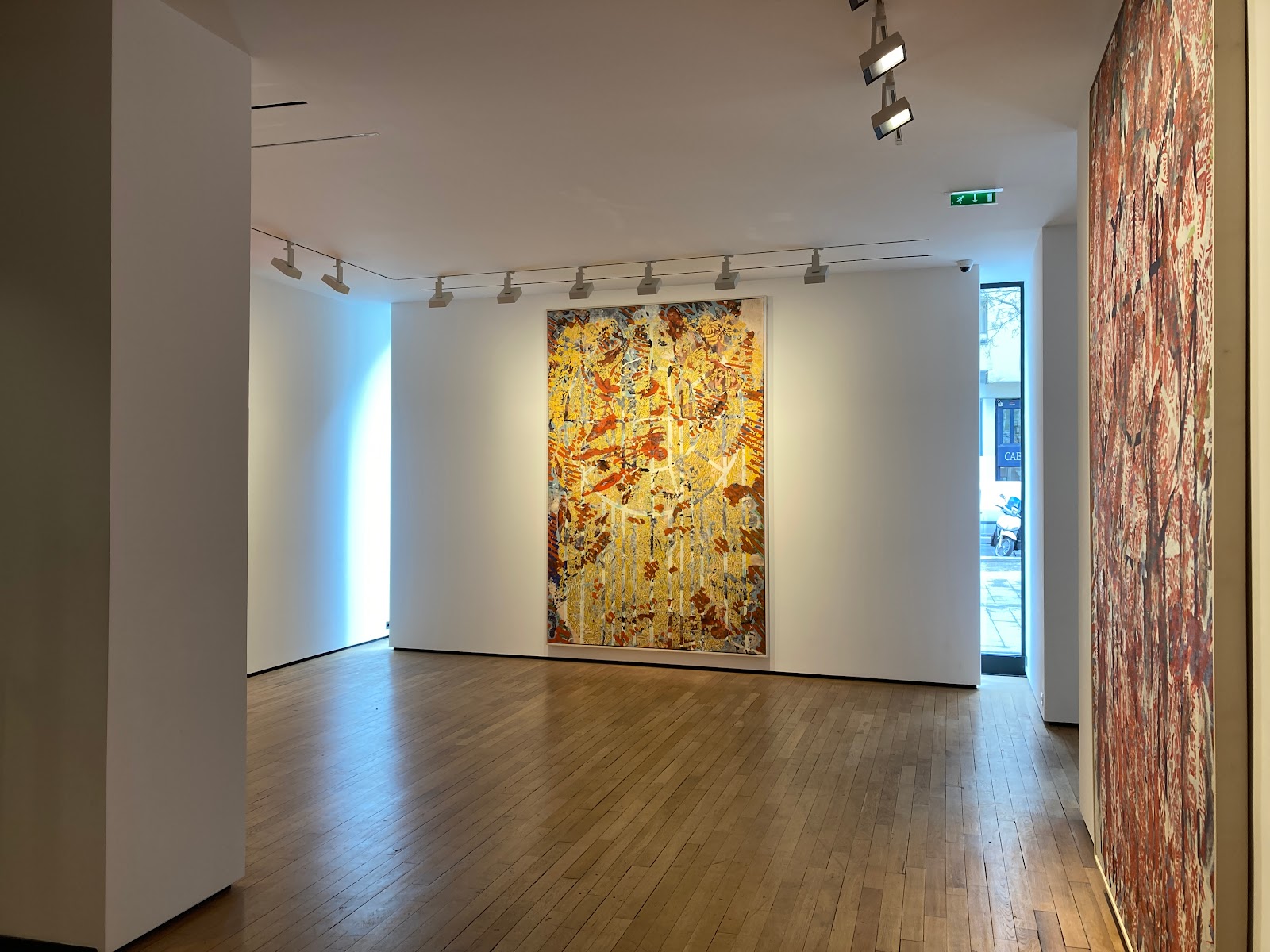Pour cet article j'ai décidé de réunir deux artistes français qui ont utilisé, ou utilise encore, la cire dans leur travail. Il s'agit d'Eugène Delacroix (1798-1863) et de François Rouan (1943-).
Comme j'ai déjà pu le mentionner dans mon article sur l'histoire de l'encaustique, Eugène Delacroix a eu recours à la peinture à la cire lors de la réalisation de ses oeuvres pour La Chapelle des Saints-Anges de l'église Saint Sulpice à Paris. La commande pour La Chapelle remonte à 1849 mais celle ci ne sera inaugurée que le 31 juillet 1861.
Il ne me manquait plus qu'à rencontrer l'oeuvre elle-même. C'est sous un ciel gris d'un timide mois de mai que j'ai pu me rendre pour une visite éclair de la Capitale.
(Toutes photos de l'auteur)
La Chapelle des Saints-Anges est la première chapelle à droite en entrant dans l'église qui compte pas moins de 19 chapelles au total. Eugène Delacroix réalisa trois oeuvres pour cette chapelle. Ces oeuvres ont été restaurées en 2016.
La Lutte de Jacob avec l'Ange, c'est Delacroix luttant avec sa peinture durant de nombreuses années dans cette Chapelle des Saints-Anges. Ces peintures ne seront inaugurées, avec un accueil très mitigé, qu'en 1861 soit deux ans avant la mort de l'artiste. La peinture est avant tout un engagement physique, un engagement total de l'artiste avec son oeuvre.
Pour cette visite éclair à Paris il me restait à rencontrer l'oeuvre d'un artiste qui expose rarement : il s'agit de François Rouan présenté à la galerie Templon du 23 mars au 13 mai. L'exposition Odalisques et Pavanes présente un ensemble d'oeuvres de 2009 à 2020.
Vues générales de la galerie
Voici quelques photos prises à la galerie ainsi que quelques oeuvres. François Rouan utilise aussi bien l'huile que la peinture à la cire dans la réalisation de ses oeuvres. Extraits.





























